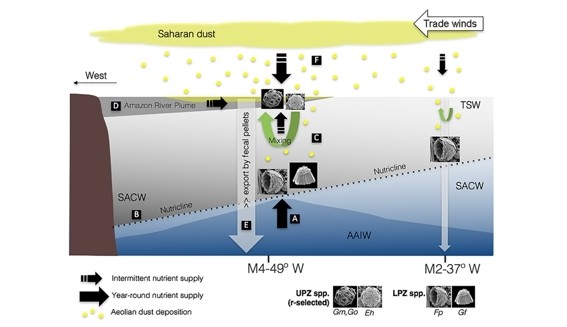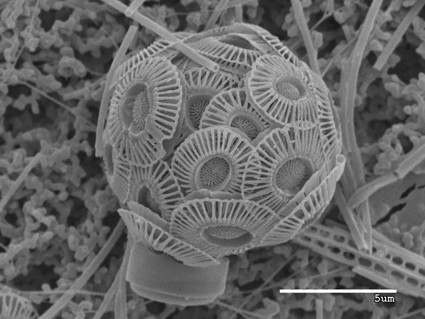The conclusions were drawn after an extensive study of assemblages of tiny [about 5µm (1µm = 1/1000 mm)] calcite platelets produced by coccolithophores (calcareous nannoplankton) that live in the photic layer of the ocean, collected with sediment traps that were deployed between Africa and the Caribbean, directly below the main Saharan dust plume at 12oN. It turns out that especially in the western parts of the Atlantic Ocean, the algae respond to input of both fresh water from the Amazon River, as well as to deposition of dust blown in from the Sahara Desert.
Please feel free to download the paper here: www.biogeosciences.net/14/4577/2017/bg-14-4577-2017

